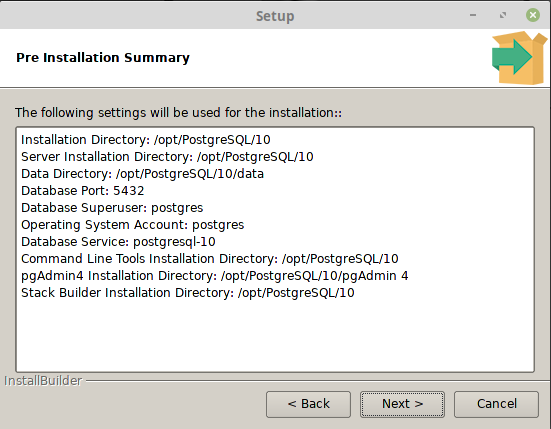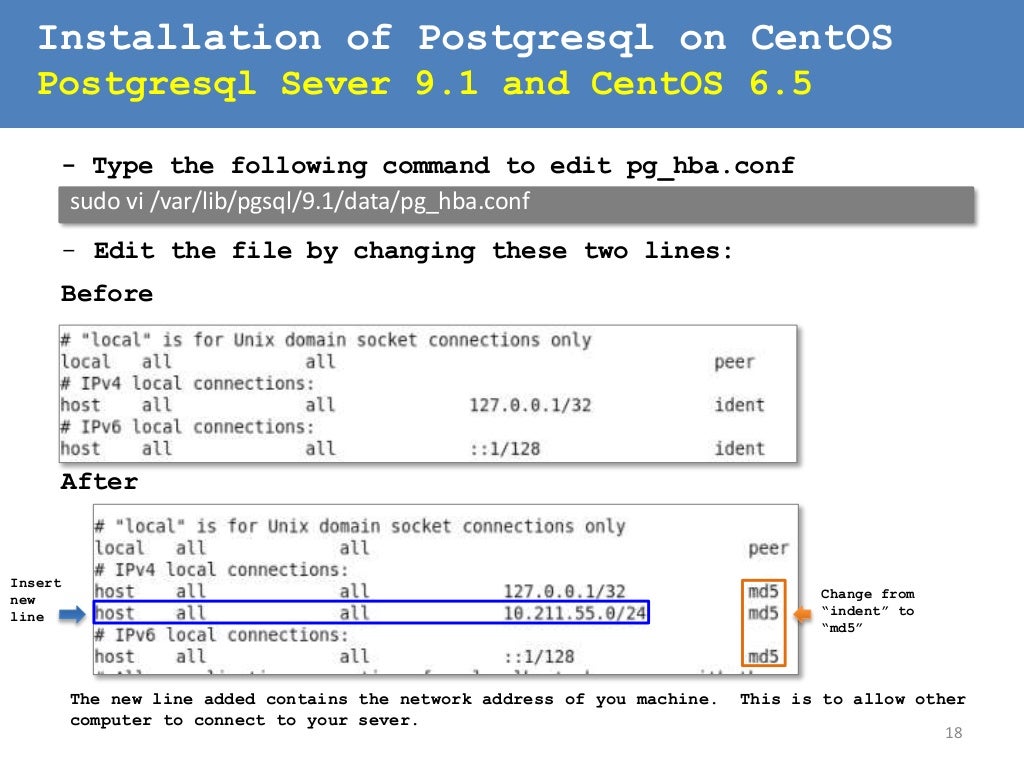

- #POSTGRESQL INSTALL INSTALL#
- #POSTGRESQL INSTALL UPDATE#
- #POSTGRESQL INSTALL PASSWORD#
- #POSTGRESQL INSTALL WINDOWS#
#POSTGRESQL INSTALL INSTALL#
If you want to install some additional add-ons or features then, check using the Stack builder box. The following dialog will notify you that PostgreSQL installation can begin on your system. Click on the ‘Next’ to start the PostgreSQL 14.2 installation.
#POSTGRESQL INSTALL WINDOWS#
Now, verify the pre-configuration setting of PostgreSQL as a Windows Service. Alternatively, you can change your location. You can change this TCP port or can continue with the default port. The default port used to run the PostgreSQL service is 5432. Set the TCP port number for the PostgreSQL service.
#POSTGRESQL INSTALL PASSWORD#
Once the password is created, click on the ‘Next’. This password is created for the PostgreSQL administrator to make the database secure. It is possible that PostgreSQL is already installed at your site, either because it was included in your operating system distribution or because the system administrator already installed it. Set the database password for the super user. Before you can use PostgreSQL you need to install it, of course. Now, select the directory where you want to store your PostgreSQL data. You can select the PostgreSQL components that you want to install on your Windows Server. In the next dialog, by default, all components are selected for installation. You can also choose a different directory location to install the PostgreSQL software. By default, it will install in the ‘C’ directory. In the next dialog, select the installation directory.

Now, to proceed further click on the ‘Next’. Once the windows version PostgreSQL 14.2 is downloaded, double-click on the downloaded setup to start the installation of PostgreSQL on Windows Server 2022.

$ su - postgresĪnd that’s just about it.Install PostgreSQL 14 on Windows Server 2022 The next time you try logging in using the postgres user, you will be required to authenticate. psql -c "ALTER USER postgres WITH PASSWORD 'your-password' " $ su - postgresĪnd run the command shown. As a sudo user, run the command: $ sudo passwd postgres Once you have switched to the postgresql user, access the database prompt using the command: $ psqlĬonnect PostgreSQL Database Step 6: Set Password for Postgres Userįinally, we are going to secure the postgres user with a password for security reasons. In the next step, we shall create a password for the postgres user for security reasons.įor now, we are going to log in to the PostgreSQL shell by first switching to the postgres user. It does not require any authentication and a password is therefore not required to log in. When PostgreSQL is installed, a default database user called postgres is created. Initialize PostgreSQL Database Step 5: Connect to PostgreSQL Database So, to initialize the database, run the command: $ sudo /usr/pgsql-*/bin/postgresql-*-setup initdb A cluster is a group or collection of several databases that are managed by a cluster. Step 4: Initialize the PostgreSQL Databaseīefore proceeding further, we need to initialize the initdb database which is responsible for creating a new PostgreSQL cluster. To confirm that PostgreSQL is up and running, execute: $ sudo systemctl status postgresql-13įrom the output, it’s clear that our database server is running as we would expect. Thereafter, start the PostgreSQL database server. But before that, enable PostgreSQL to start on boot time. Once PostgreSQL is installed, the next step is to start the service and ensure the database server is running. Psql (PostgreSQL) 13.4 Step 3: Start and Enable PostgreSQL Service You can confirm the version of PostgreSQL installed using the command: $ psql -V At the very end of the installation, you should have the output displayed which indicates that all the packages were successfully installed. The command installs PostgreSQL server and client alongside other dependencies. Type 'Y' and hit ENTER every time you are prompted to import the GPG key. $ sudo dnf install postgresql13 postgresql13-server Once the default module is disabled, proceed and install PostgreSQL 13 client and server as shown. Next, disable the default module which, as we saw earlier, is PostgreSQL 10. PostgreSQL is an enterprise-class open-source database.
#POSTGRESQL INSTALL UPDATE#
Simply run the following command to achieve this $ sudo dnf update

With the PostgreSQL YUM repository in place, the next step is to update Rocky Linux repositories. Step 2: Install PostgreSQL 13 on Rocky Linux To install the latest PostgreSQL version, we need to, first, install the PostgreSQL YUM repository on our system as shown. From the output, we can clearly see that the default PostgreSQL stream – marked with is PostgreSQL 10.


 0 kommentar(er)
0 kommentar(er)
